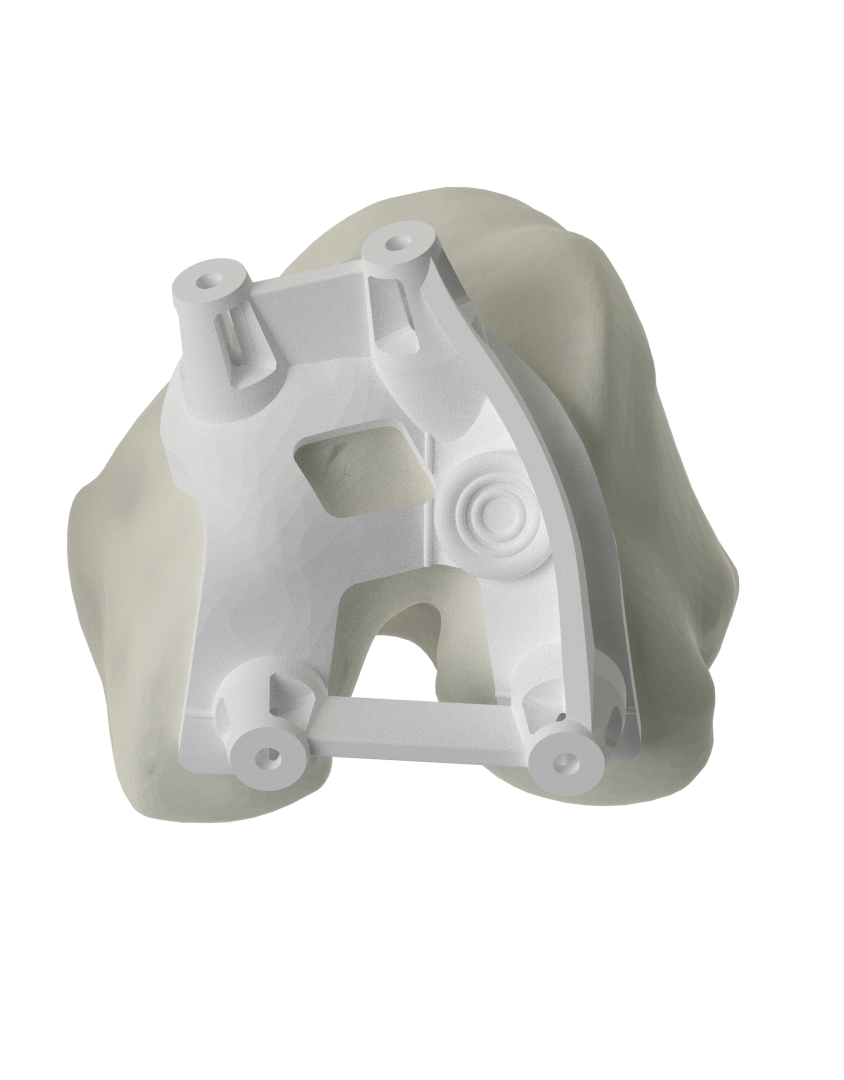Medicine has long been projected to be among the first industries to be heavily impacted by 3D printing technology. After all, hearing aids and dental aligners have proven to be killer apps for the technology, with over 10 million 3D printed hearing aids already in the world today. Now, medical 3D printing has taken a further leap forward via Materialise (MTLS), as the company has received CE Marking Certification for most of its personalized orthopedic and cranio-maxillofacial (CMF) products.
CE Marking approval is meant to demonstrate that a medical device meets that standards of the European Medical Devices Directive. Before this news, Materialise’s 3D printed devices necessitated medical prescriptions each time they were made for every patient and application. Now, the CE Marking applies to a number of products in its portfolio, including patient-specific orthopedics, anatomic models, and patient-specific surgical guides and implants.
Materialise is already a leader in the medical 3D printing space, having produced over 350,000 personalized devices across six continents. The company launched its Mimics software in 1992, forming the foundation for 3D image-based engineering. In 2007, the company was the first to bring 3D printed tools into the operating room with its surgical knee guides. 2009 saw the launch of patient-specific CMF implants, in which part porosity enabled improved bone growth for such devices.
In a recent 3DPrint.com PRO article, executive editor Joris Peels described in detail Materialise’s unique strategy across a number of verticals. Indeed, the Belgian firm has been an interesting one, supplying both software and 3D printing services and now acquiring a 3D scanning firm. Peels suggested that the company has been cautious, yet dependable and innovative in its strategic decision making—not always being the first to a new market application, but ensuring that a new angle in a new field is worthwhile before jumping in and innovating the hell out of it in a very deliberate manner.
“When the European Medical Devices Directive came to place in 1993, the use of personalized devices was exceptional. In the last 30 years, we have advanced 3D planning and printing to scale this technology to a much larger audience. At Materialise, we are talking about thousands of devices delivered worldwide every year. Personalized devices are no longer the exception. This CE marking certification demonstrates that these personalized devices meet the same stringent quality requirements as regular devices, despite the challenges involved to make every device match the specific patient’s anatomy,” says Brigitte de Vet, Vice President and Managing Director of Materialise Medical.
In this case, the company’s steady work in medical 3D printing has allowed it to become possibly the first to receive such certification for such a wide array of devices. Now, patient-specific implants and guides can be deployed at a larger scale more quickly across Europe. Materialise suggests that the certification will improve accessibility to personalized medical devices, as surgeons won’t need to sign a prescription for the devices they order and there will be less paperwork for pharmacists.
Meanwhile, we know that models and devices tailored to patients improve patient outcomes, reduce time in the operating room, and better prepare surgeons for procedures. De Vet spoke to this, saying:
“The advantage of using personalized devices is that they add more predictability into the surgical setting and allow the treatment of any clinical condition, including the most challenging ones. Now having this CE marking for our larger portfolio will help bring these personalized devices to even more patients, removing some of the administrative constraints for our customers.”
The company already has CE markings for some of its medical software, including Mimics Innovation Suite and Mimics Enlight. Now that it has this certification, we really may see medical 3D printing take off and deliver the value that it has promised for so long. To learn more about the man behind Materialise, listen to our interviews with CEO Fried Vancraen, part one and part two.
(Image courtesy of Materialise.)
Subscribe to Our Email Newsletter
Stay up-to-date on all the latest news from the 3D printing industry and receive information and offers from third party vendors.
You May Also Like
Precision at the Microscale: UK Researchers Advance Medical Devices with BMF’s 3D Printing Tech
University of Nottingham researchers are using Boston Micro Fabrication‘s (BMF) 3D printing technology to develop medical devices that improve compatibility with human tissue. Funded by a UK grant, this project...
3D Printing Webinar and Event Roundup: April 21, 2024
It’s another busy week of webinars and events, starting with Hannover Messe in Germany and continuing with Metalcasting Congress, Chinaplas, TechBlick’s Innovation Festival, and more. Stratasys continues its advanced training...
3D Printing Webinar and Event Roundup: March 17, 2024
It’s another busy week of webinars and events, including SALMED 2024 and AM Forum in Berlin. Stratasys continues its in-person training and is offering two webinars, ASTM is holding a...
3D Printed Micro Antenna is 15% Smaller and 6X Lighter
Horizon Microtechnologies has achieved success in creating a high-frequency D-Band horn antenna through micro 3D printing. However, this achievement did not rely solely on 3D printing; it involved a combination...































